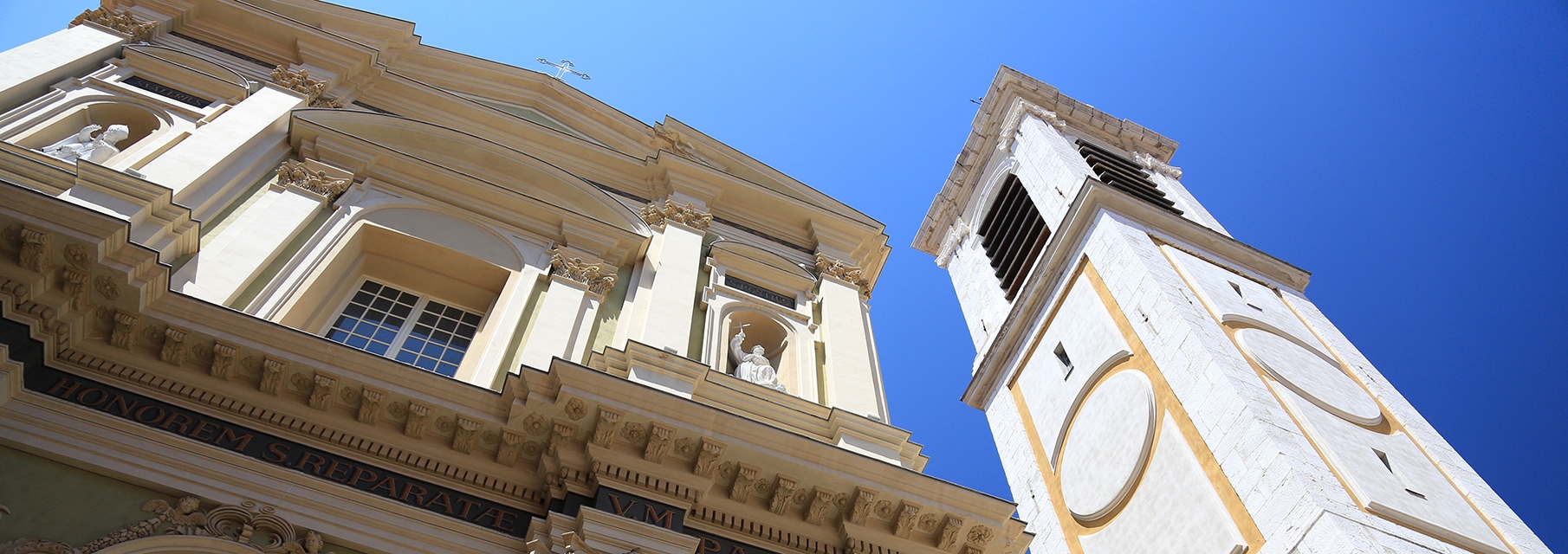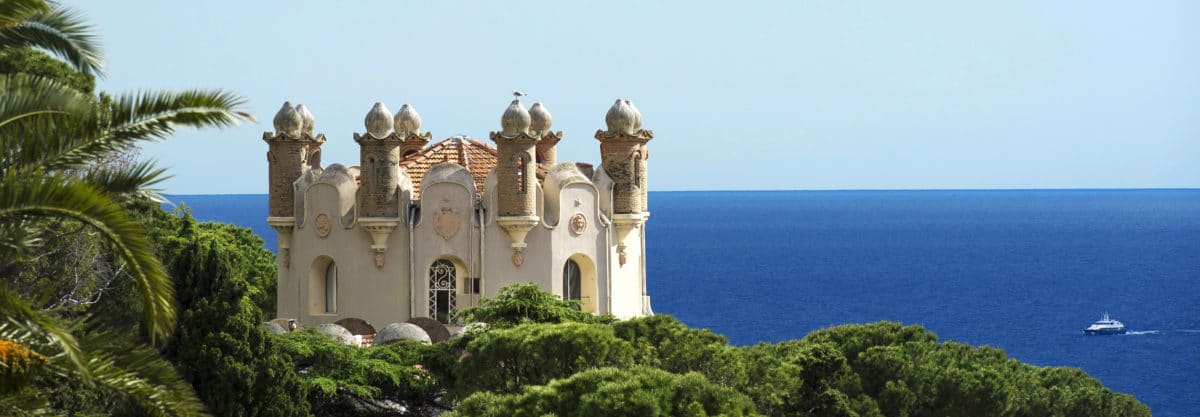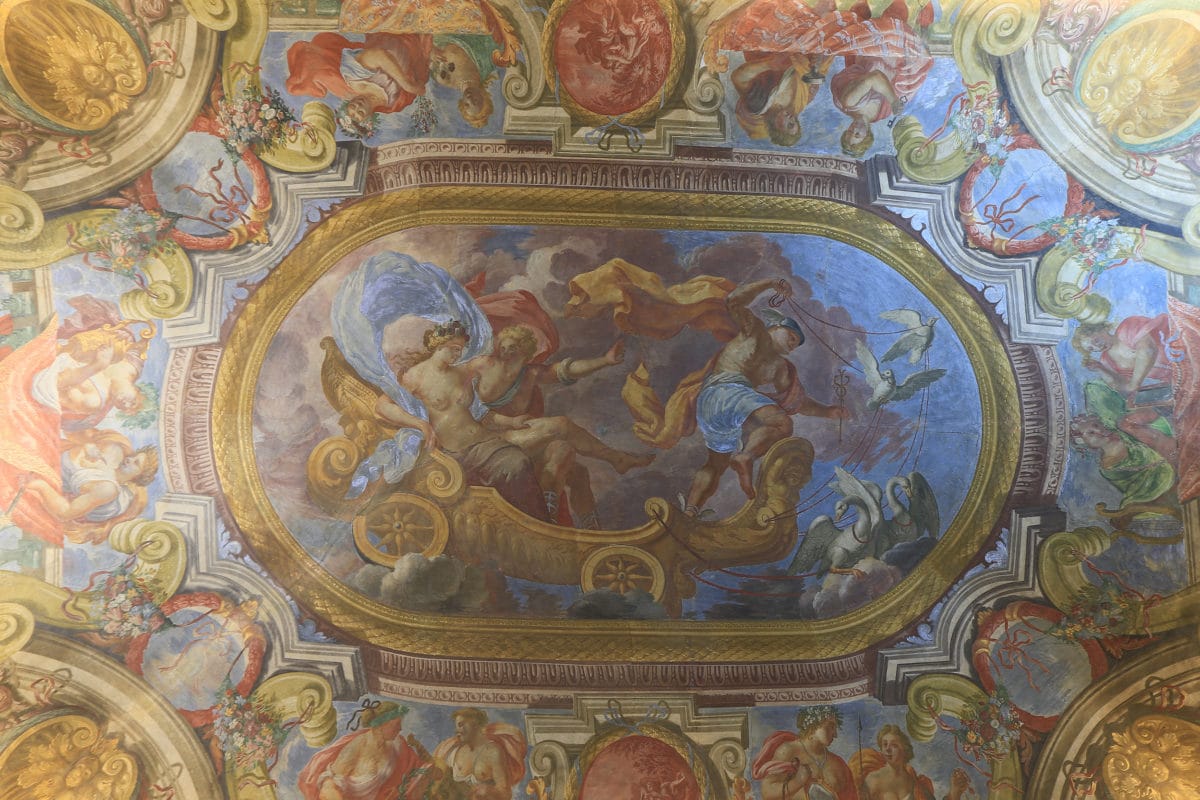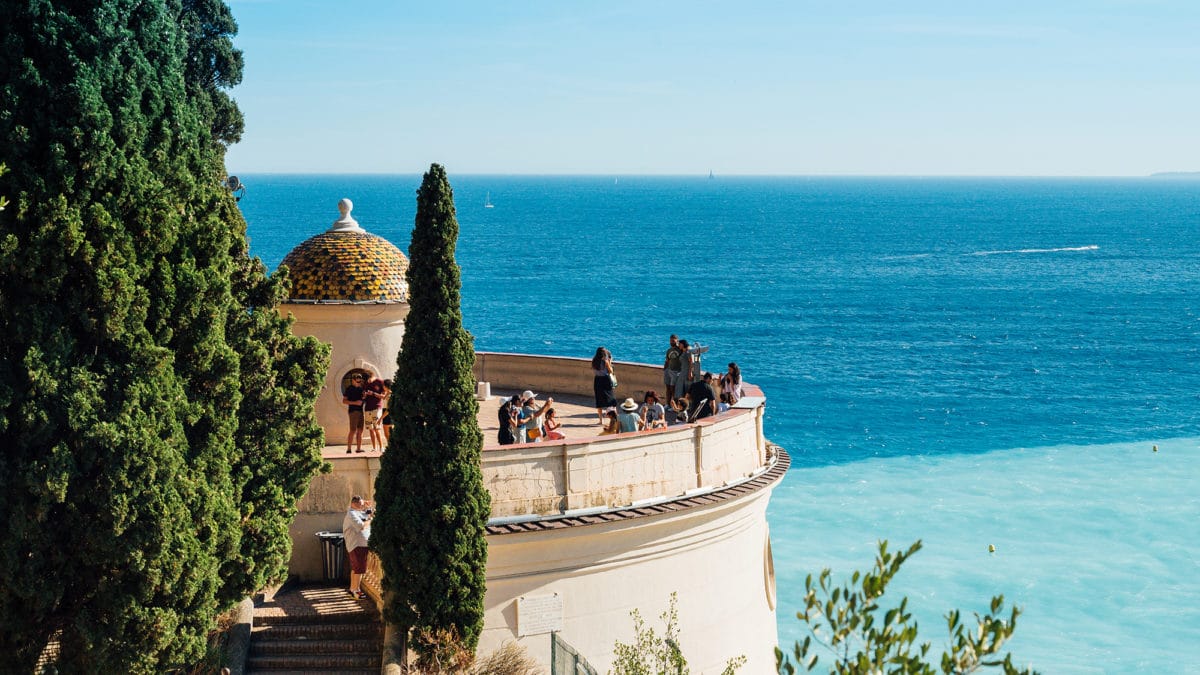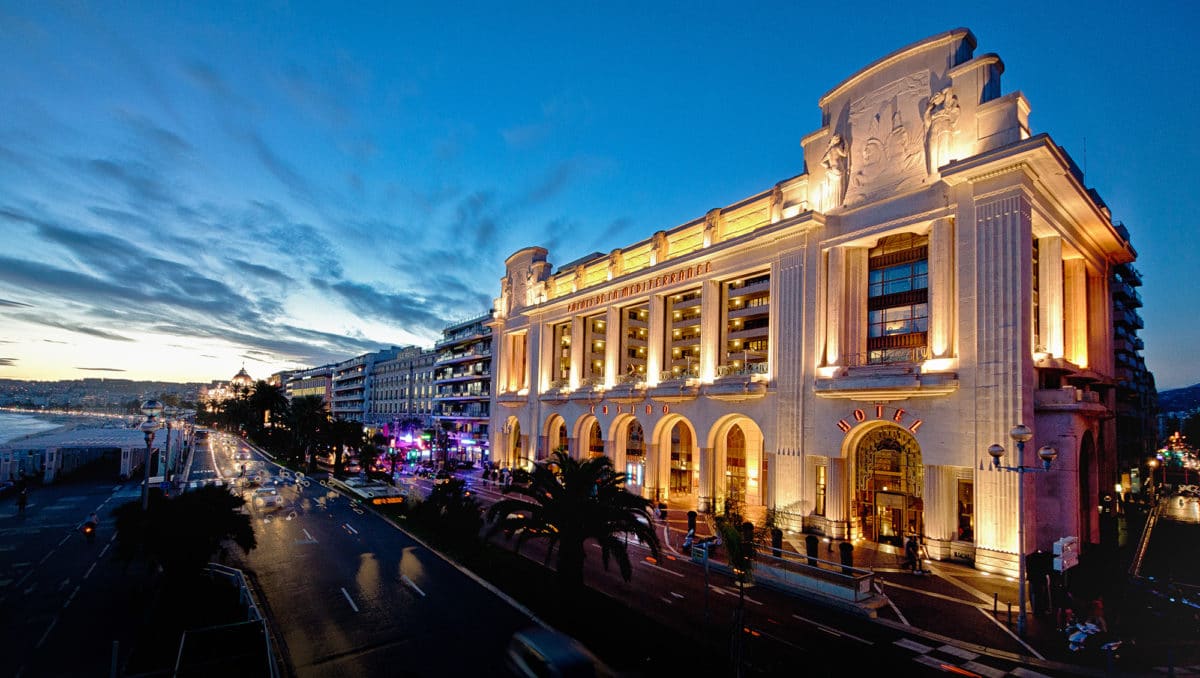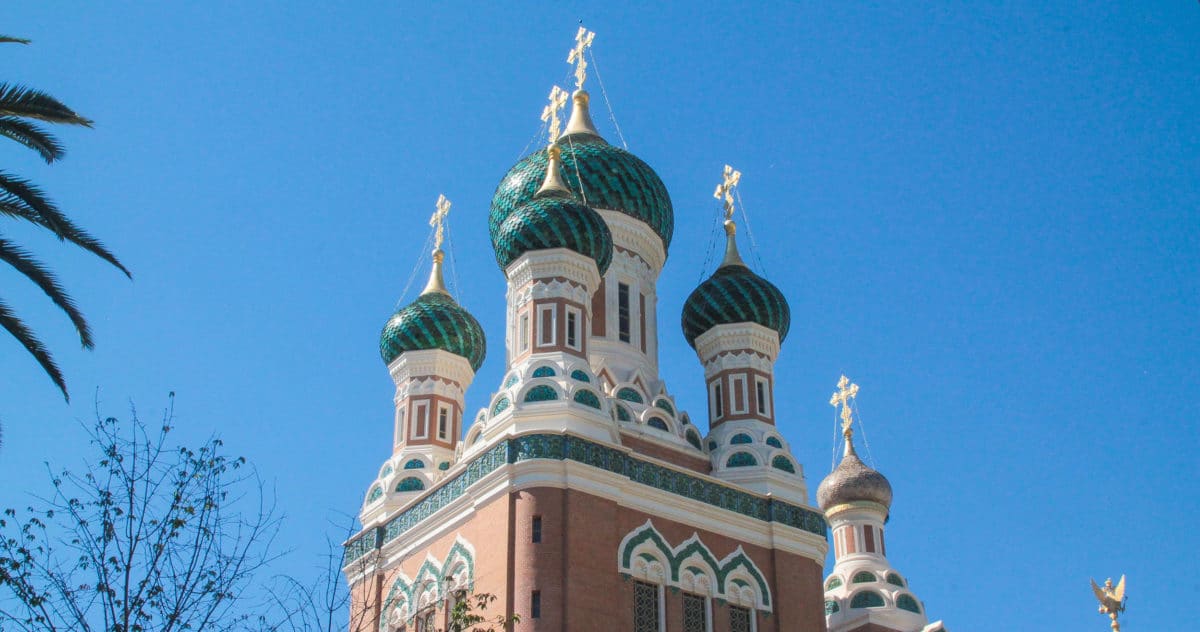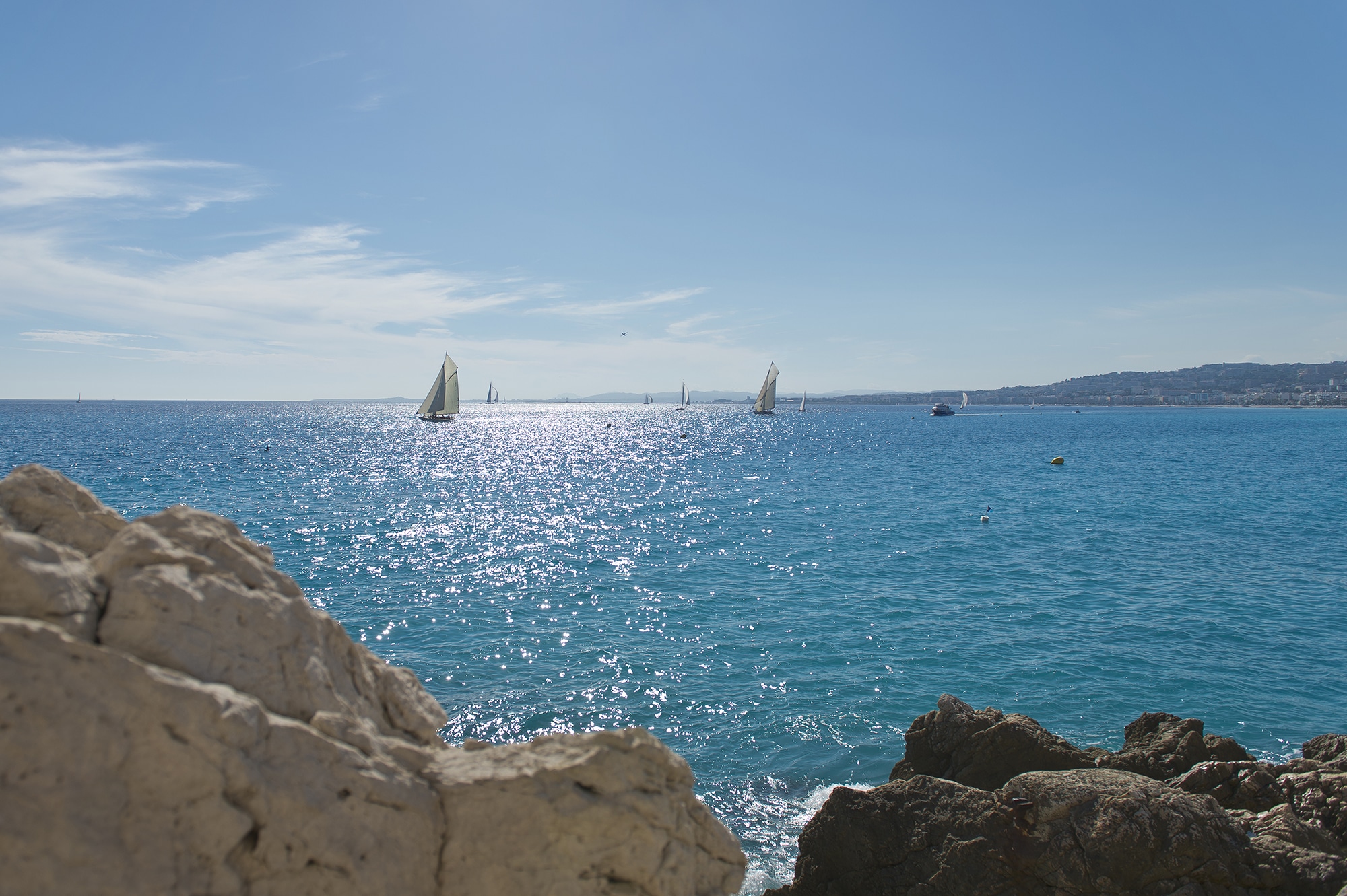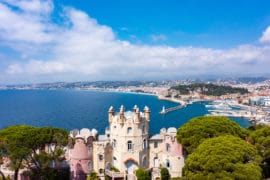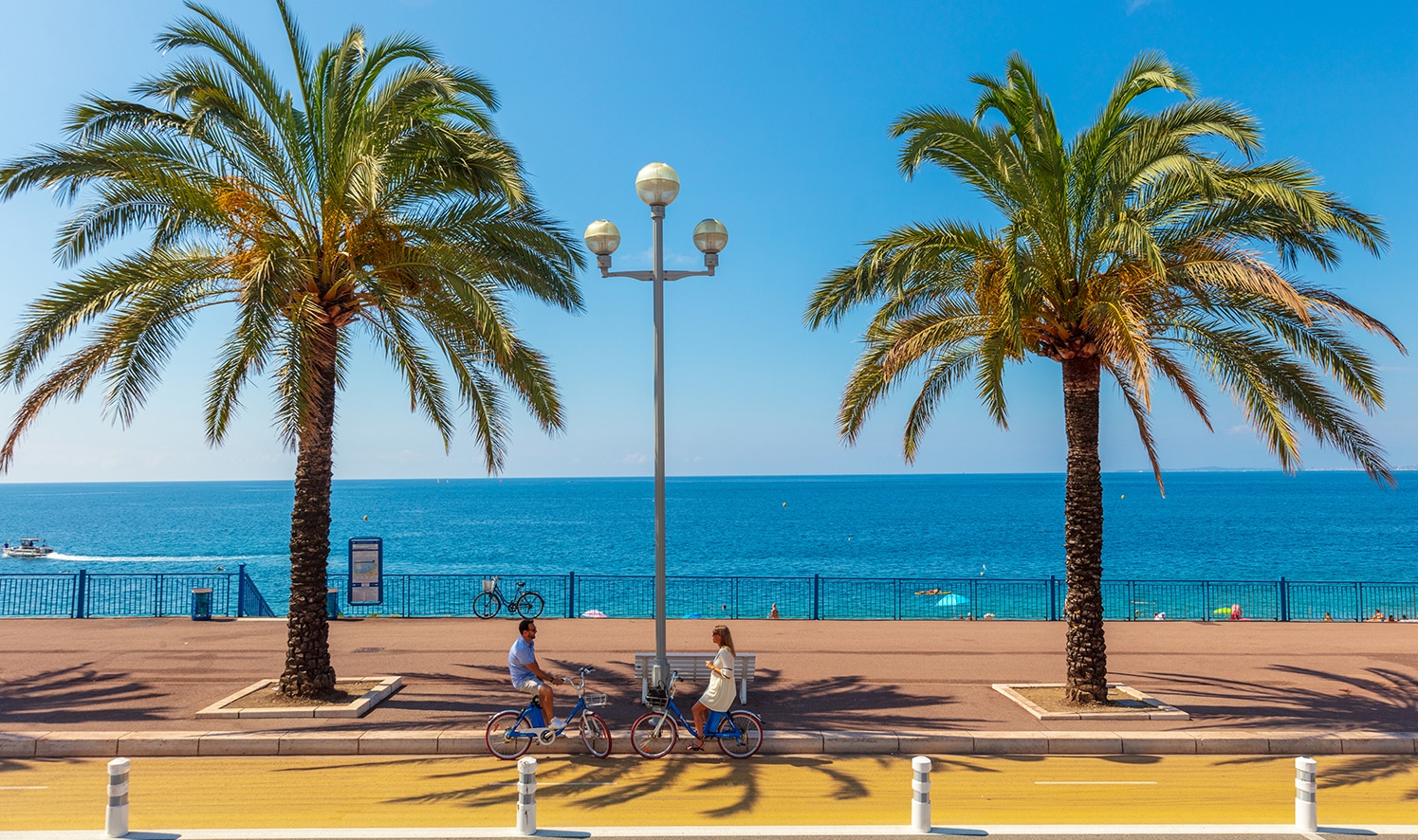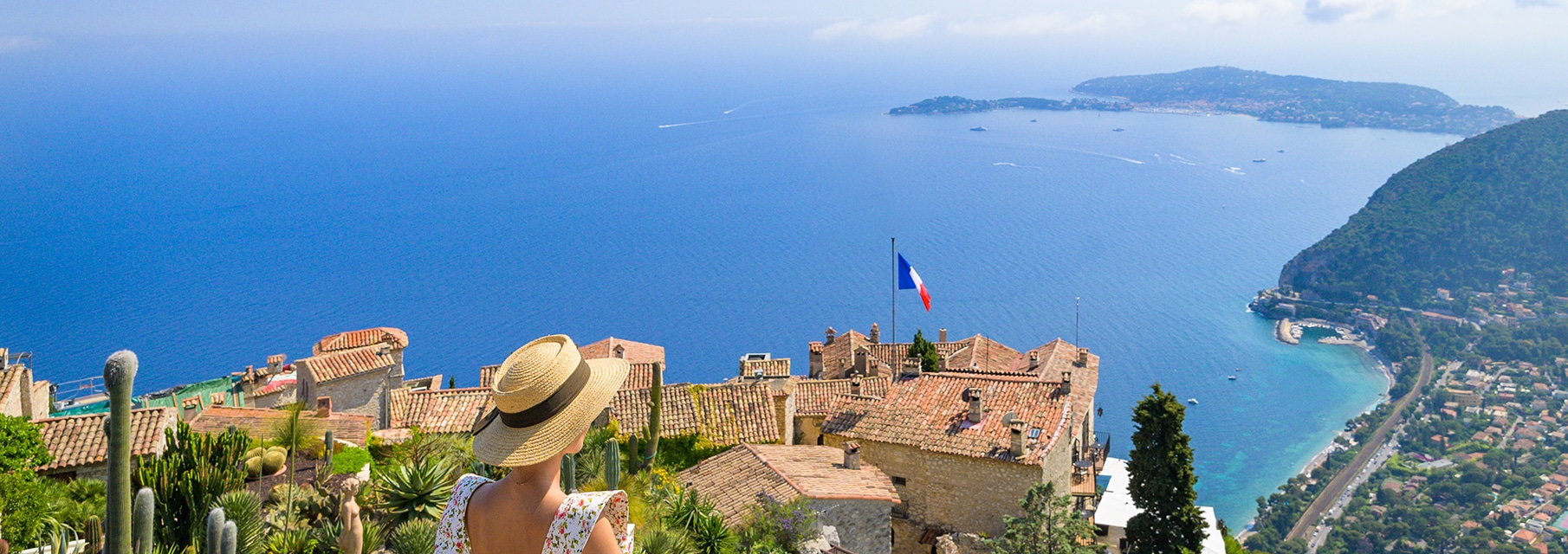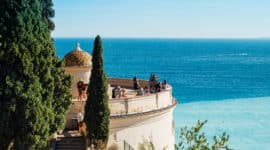Nice, a diverse religious heritage
Nice has the particularity of housing a large number of buildings of different religions. These places of worship bear witness to the presence of foreign communities that have lived in the city over the centuries. The city has kept the imprint of each period within its walls and is committed to safeguarding its heritage.
In the old town of Nice
Good to know: When Nice surrendered to Savoy in 1388, the old town of Nice saw a number of religious buildings flourish. At that time, only Catholic and Jewish places of worship were allowed.
A predominantly baroque old town
It was in the 17th century, under Charles Emmanuel I, Duke of Savoy and Prince of Piedmont, that the old town gradually took on its present appearance with the predominance of the Baroque style. Each island had its own place of worship.
Among the most emblematic monuments
The church of St. James the Greater, better known as the “Church of the Gesù”, was, until 1773, the former church of the Jesuit College. It then became a parish church in 1802 with the suppression of this order and took the name of St. James the Greater. It was not until 1825 that its façade became Baroque, in the Piedmontese style. It was classified as a historical monument in 1971.
A few streets further on, the church of the Annunciation, better known as Sainte-Rita, is one of the oldest churches in Nice. Dedicated to Saint-Giaume and the Annunciation, in 1934, it welcomed a chapel dedicated to Saint-Rita, which became very popular in Nice, so much so that oratory was added to the church.
Not far away, the Cathedral of St. Repara was built between 1650 and 1699, the year of its consecration. It is dedicated to St. Repara, a virgin. It is a baroque building, classified as a historical monument and elevated to the rank of the basilica in 1949. Inside, visitors can admire 10 chapels and three organs, as well as the altar that guards the body of the patron saint, which fuels one of the legends of the “Bay of Angels”.
Located on Place Saint-Augustin, the church of Saint-Martin, also known as Saint-Augustin, is one of the oldest churches in Nice. A former convent of the hermit fathers of Saint-Augustin, the church dates in part from the 17th century. Beautiful paintings, including an altarpiece representing a “Pietà” attributed to Louis Bréa around 1504, adorn this building. The baptismal certificate of Giuseppe Garibaldi is displayed at the entrance.
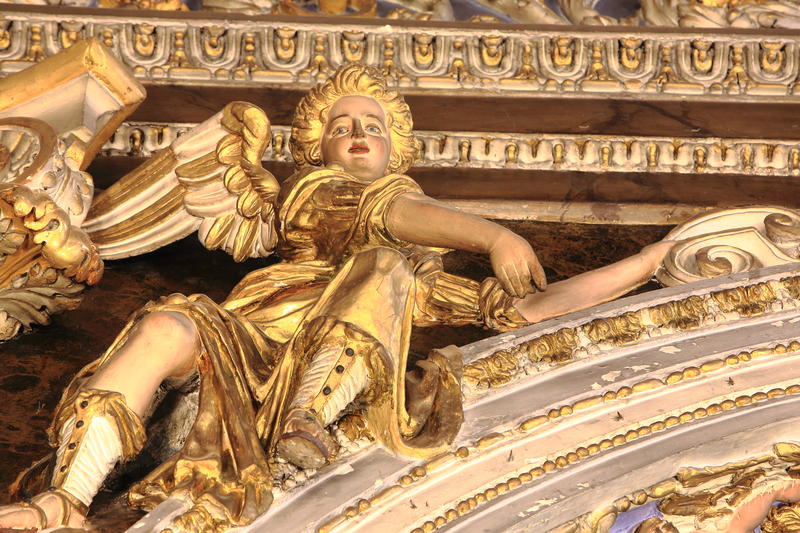
@OTM NCA / J.Kelagopian

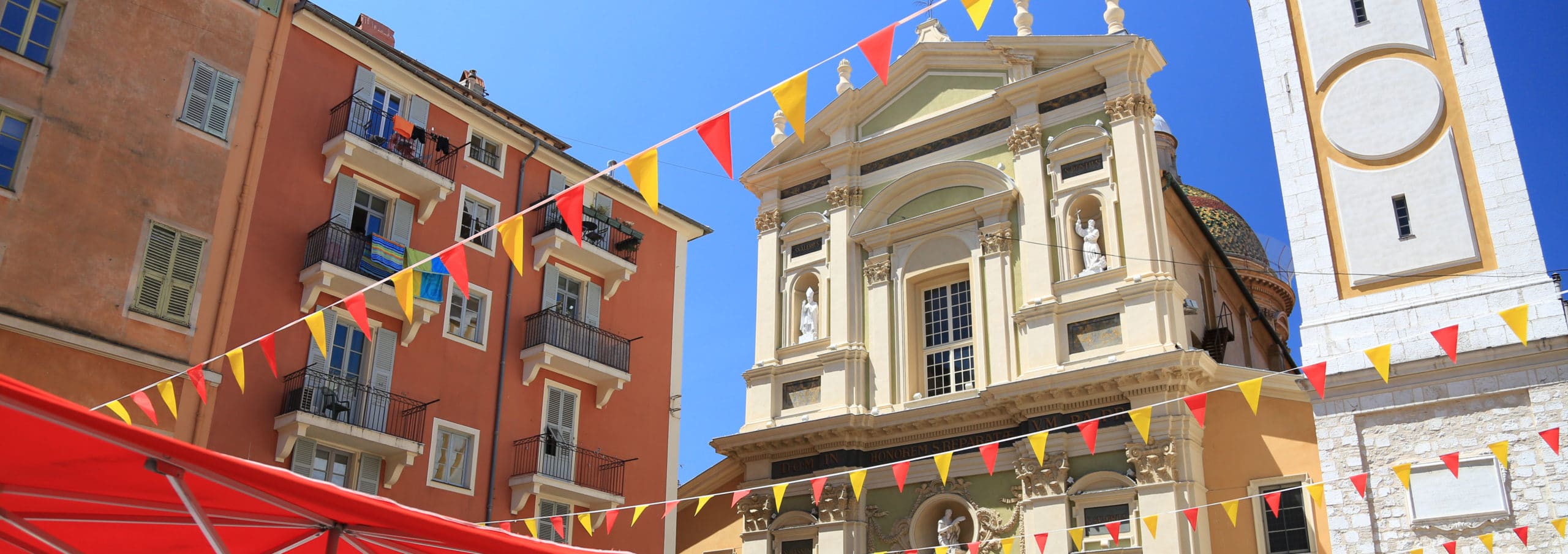
A diversion to the chapels of the white, blue, red and especially black penitents, with the Chapelle de la Miséricorde, a jewel of Baroque art, is a must.
In the city centre
While Old Nice is full of buildings belonging to the Catholic religion, the city centre bears witness to the cohabitation of all the religions of the various foreign communities living in the city since the 18th century.
Located in the heart of Nice, the Basilica of Notre-Dame de Nice is the first church in the area and corresponds to the exponential expansion of the city. The Basilica is the most important Catholic place of worship in the city and is built in the Gothic style after the Angers cathedral. It has excellent acoustics, which makes it ideal for the organisation of musical events.
Many other churches were to follow, notably during the art deco period with the very surprising Sainte-Jeanne d’Arc, Notre-Dame de l’Auxiliatrice, Notre-Dame du Perpétuel Secours…
Protestant churches
Among the 6 Protestant churches still in operation is the Anglican Church of the Holy Trinity. Since the 18th century, Nice has been a popular resort for rich British families. It was these winterers who raised the funds to build the first church in 1820. At that time, Nice belonged to the Kingdom of Piedmont-Sardinia and foreigners were allowed to worship. In 1862, in French Nice, the Holly Trinity Anglican Church was built. In neo-Gothic style, it has 4 different styles of stained glass windows, one of which was made by the Atelier Lorin de Chartres, and holds the arms of Queen Victoria. It is one of the three largest churches in Europe outside the Commonwealth.
From the middle of the 19th century, Nice and the Côte d’Azur attracted the Russian aristocracy. Empress Alexandra Feodorovna gave the impetus for the construction of the first Orthodox church in 1859, on rue Longchamp.
Orthodox places
But as the Russian community grew, the need for a suitable place of worship became apparent. The construction of St. Nicholas Cathedral began in 1903 on the property where Tsarevich, the eldest son of Alexander II, died in 1865. A chapel was built in memory of the young Tsar.
Since its inauguration in 1912, the cathedral has been a place of worship for the Russian-speaking community of the whole region. St. Nicholas Cathedral and the surrounding park became the property of the Russian Federal State. Listed as a historical monument, it is the largest Russian Orthodox church built outside Russia.
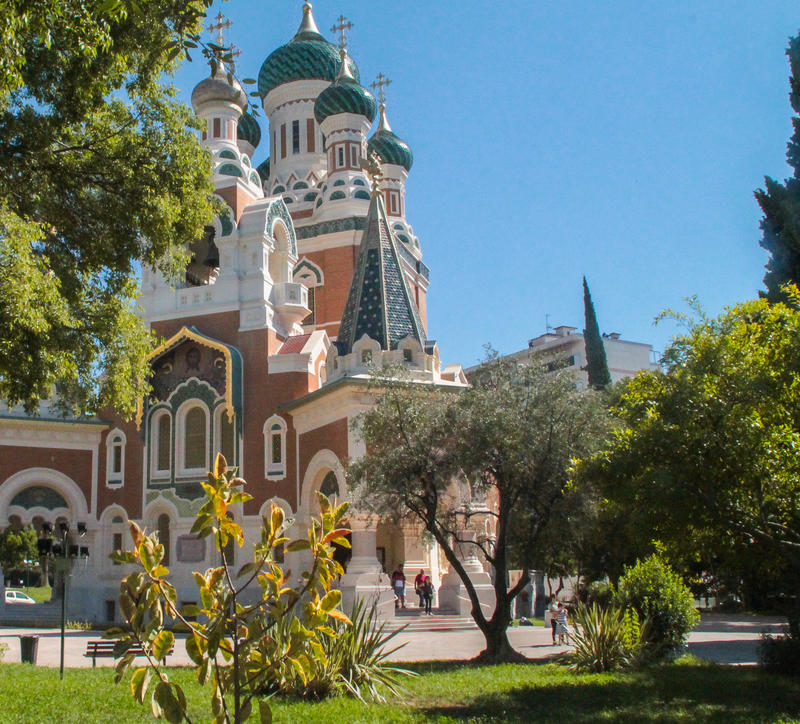
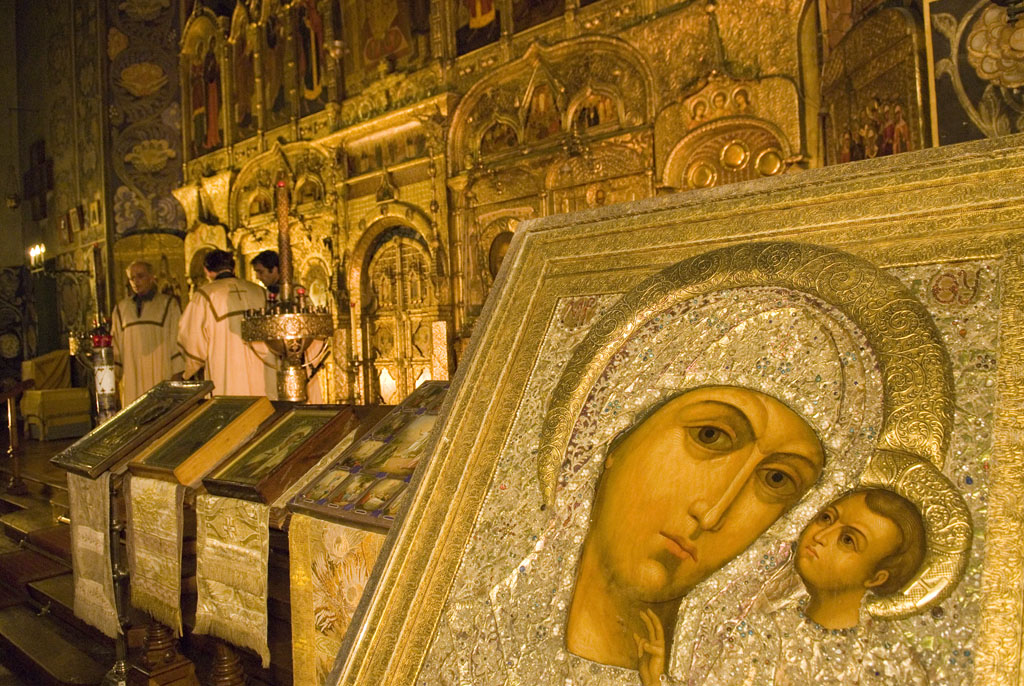
Another important church is the Greek Orthodox Church of Saint-Spyridon. From the 1930s, the Greek community developed in Nice. The Greek Orthodox Church of Saint-Spyridon was built in 1950 and consecrated in 1957. It is an example of pure decorative Byzantine art in Nice. The stained glass windows that line certain sections of the church and the murals were made in the early 1990s.
Or the Chapel of the Dormition of the Virgin, founded in 1960. It is the link of the Serbian community, as much a place of worship as a place to maintain their culture. The walls were decorated in 1966 with frescoes by Eugraph Kovalesky. Threatened with eviction in 2018, it was saved with the help of Novak Djokovic and local institutions.
Other Orthodox communities are very much alive, such as the Armenian Apostolic Church of Saint Mary, built in 1927 by the large diaspora of the Madeleine district.
Jewish places of worship
Today, a small number of synagogues in Nice reflect a very dynamic community, established here since the 11th century, first in the old town and then in the new town.
The Great Synagogue, built in 1886, was declared a historical monument in 2007. Its main façade has a Romanesque-Byzantine composition in the form of a pyramid at the top. A magnificent series of stained glass windows by Théo Tobiasse illuminates the building.
Eastern places of worship
The range of places of worship is however much wider. It is enriched, in fact, by oriental and middle eastern practices, but whose buildings do not have, in Nice, any architectural or decorative particularities.


